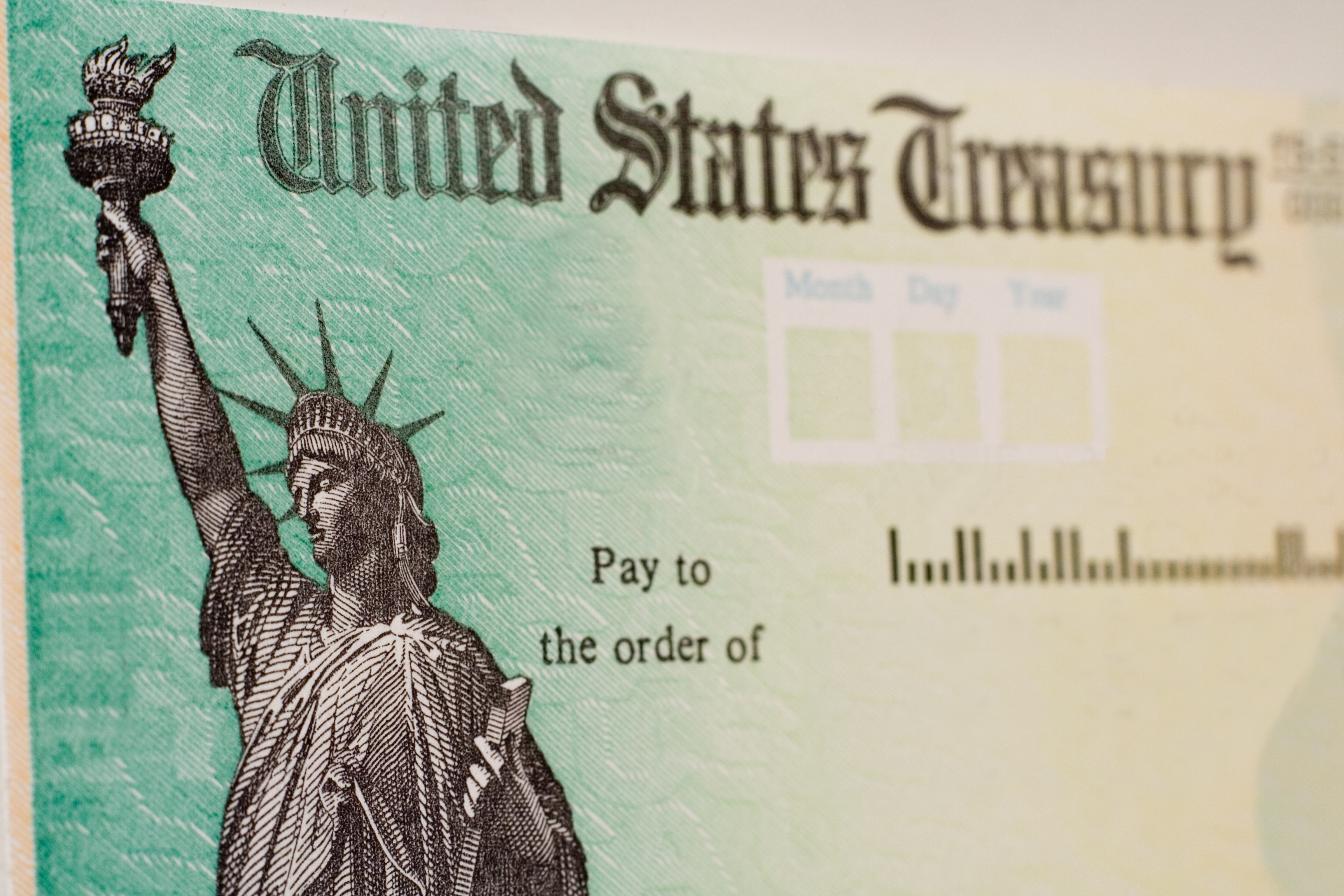Bond Basics: Treasuries
For safety, U.S. treasuries are the way to go.


United States Treasury securities, often called treasuries, are debt obligations issued by the U.S. government and secured by the full faith and credit and power to tax and borrow of the United States. The income from Treasury securities may be exempt from state and local taxes, but not from federal taxes.
Securities issued by the U.S. government and its agencies are the choice of many risk-averse investors or investors looking to diversify and balance their portfolios. Their safety can't be matched. However, yields on government issues usually run a little lower than on high-grade corporate bonds because they are safer. Risk brings a premium.
Bonds help add diversity to your portfolio and mitigate risk. But they can be complicated. We can help you understand the basics of bonds and make them work for you. Here's a rundown of the most popular government debt instruments.

Sign up for Kiplinger’s Free E-Newsletters
Profit and prosper with the best of expert advice on investing, taxes, retirement, personal finance and more - straight to your e-mail.
Profit and prosper with the best of expert advice - straight to your e-mail.
How to buy a U.S. Treasury
You can buy Treasury bills, notes, bonds, Treasury-Inflation Protection Securities (TIPS), or Floating Rate Notes (FRNs) at one of the auctions conducted by the Treasury or in the secondary market. If you want to buy a Treasury security at an auction, set up an account at treasurydirect.gov or contact a broker, dealer, or financial institution.
Treasury bills, notes, bonds, TIPS, and FRNs are sold for a minimum of $100, and you can buy savings bonds for as little as $25
Ownership is recorded in book-entry form, meaning you only receive a notification that you own them, certificates are no longer issued.
Information about upcoming auctions can be found in press releases posted at treasurydirect.com.
Treasury bills
Treasury bills (T-bills) mature in 1 year or less and are available in five terms: four weeks, eight weeks, 13 weeks, 26 weeks and 52 weeks. They do not pay an interest rate, but are sold at a discounted price compared to the par value, also called face value. The bond pays the full par value upon maturity.
There are some particularities to how you buy Treasury bills. When first issued, T-bills are auctioned off to the public on a discount basis, and then redeemed at maturity for the full face amount. If the auction determines that the rate is 5%, for instance, a buyer would pay $9,500 for a $10,000 bill, then collect $10,000 when it matures.
Treasury notes
Treasury notes (T-notes) mature in two, three, five, seven, or 10 years. Coupon payments are made twice a year, either at a fixed or floating rate. You receive coupon payments, which are interest payments, every six months and the par value upon maturity.
T-notes are auctioned by the U.S. Treasury and the price of the note may fluctuate based on the results of the auction. It may be equal to, less than, or greater than the note's face value.
The 10-year T-note is used as a benchmark rate for banks to calculate mortgage rates
Treasury inflation-protected securities (TIPS)
Treasury inflation-protected securities (TIPS) are 5, 10 or 30 year notes that are indexed to the rate of inflation on a daily basis as measured by the Consumer Price Index (CPI). Unlike other Treasury securities, where the principal is fixed, the principal of a TIPS can go up or down over its term.
Interest is determined by the inflation rate and the principal is adjusted every six months to reflect the change.
When the TIPS matures, if the principal is higher than the original amount, you get the increased amount. If the principal is equal to or lower than the original amount, you get the original amount.
Treasury bonds
Treasury bonds (T-bonds) mature in 20 or 30 years. These are the longest-term bonds and as such typically offer the highest coupon payments. The rate is fixed at auction. It does not vary over the life of the bond. You receive an interest payment every six months. Upon maturity, you are paid the par value of the bond.
In comparison to Treasury notes and bills, Treasury bonds pay the highest interest rates because investors are compensated for locking their money up for the longer term.
Floating rate notes (FRNs)
Floating Rate Notes (FRNs) are fixed income securities that pay a coupon determined by a reference rate which resets periodically. Because the reference rate resets, the coupon payments are not fixed and fluctuate overtime.
The interest rate of an FRN is the sum of two rates: an index rate and a spread rate. The index rate is tied to the highest accepted discount rate of the most recent 13-week Treasury bill. The spread is determined at the auction when the FRN is first offered and stays the same for the life of an FRN.
You receive payments every three months until maturity. FRNs are in demand among investors when it is expected that interest rates will increase.
U.S. savings bonds
There are two types of savings bonds: EE bonds and I bonds. Series EE bonds are the most common, and they are guaranteed to double in value after 20 years, regardless of changing interest rates. Series I bonds don't share this guarantee.
Series EE savings bonds earn interest regularly for 30 years or until you cash them. EE bonds are issued in electronic form only. You must have a TreasuryDirect.com account to buy and manage EE bonds. These bonds have a fixed rate of interest that is set when you buy the bond. The interest is earned monthly and is compounded semiannually.
Series I savings bonds protect you from inflation. The actual rate of interest for an I bond is a combination of a fixed rate and an inflation rate. The combined rate can, and usually does, change every 6 months. The new rates are announced every May 1 and November 1. Rate changes for your bond occur every 6 months from the issue date of your bond.
While EE and Series I savings bonds mature fully after 30 years, you can cash them in after a year. if you cash in the bond in less than 5 years, you lose the last 3 months of interest, but the interest accrued before that is yours to keep. U.S. savings bonds can not be resold, only redeemed.
Agency securities
Agency securities are loans to government agencies or federally-backed private corporations. While agencies are government-sponsored enterprises, they are not backed by the full faith and credit of the U.S. government.
Bottom line
U.S. Treasuries are a great way to balance and diversify your portfolio. Treasury securities are considered one of the safest investments because they are backed by the full faith and credit of the U.S. government. But remember — the reduced risk comes with lower returns.
Related Articles
Get Kiplinger Today newsletter — free
Profit and prosper with the best of Kiplinger's advice on investing, taxes, retirement, personal finance and much more. Delivered daily. Enter your email in the box and click Sign Me Up.

Donna joined Kiplinger as a personal finance writer in 2023. She spent more than a decade as the contributing editor of J.K.Lasser's Your Income Tax Guide and edited state specific legal treatises at ALM Media. She has shared her expertise as a guest on Bloomberg, CNN, Fox, NPR, CNBC and many other media outlets around the nation. She is a graduate of Brooklyn Law School and the University at Buffalo.
-
 Six Reasons to Disinherit Someone and How to Do It
Six Reasons to Disinherit Someone and How to Do ItWhether you're navigating a second marriage, dealing with an estranged relative or leaving your assets to charity, there are reasons to disinherit someone. Here's how.
By Donna LeValley Published
-
 Should You Still Wait Until 70 to Claim Social Security?
Should You Still Wait Until 70 to Claim Social Security?Delaying Social Security until age 70 will increase your benefits. But with shortages ahead, and talk of cuts, is there a case for claiming sooner?
By Evan T. Beach, CFP®, AWMA® Published
-
 What DOGE is Doing Now
What DOGE is Doing NowThe Kiplinger Letter As Musk's DOGE pursues its ambitious agenda, uncertainty and legal challenges are mounting — causing frustration for Trump.
By Matthew Housiaux Published
-
 A Move Away From Free Trade
A Move Away From Free TradeThe Letter President Trump says long-term gain will be worth short-term pain, but the pain could be significant this year.
By David Payne Published
-
 Trump’s Whirlwind Month of Crypto Moves
Trump’s Whirlwind Month of Crypto MovesThe Kiplinger Letter The Trump administration wants to strengthen U.S. leadership in the cryptocurrency industry by providing regulatory clarity.
By Rodrigo Sermeño Published
-
 CPI Report Puts the Kibosh on Rate Cuts: What the Experts Are Saying About Inflation
CPI Report Puts the Kibosh on Rate Cuts: What the Experts Are Saying About InflationCPI Consumer price inflation reared its ugly head to start the year, dashing hopes for the Fed to lower borrowing costs anytime soon.
By Dan Burrows Published
-
 Fed Leaves Rates Unchanged: What the Experts Are Saying
Fed Leaves Rates Unchanged: What the Experts Are SayingFederal Reserve As widely expected, the Federal Open Market Committee took a 'wait-and-see' approach toward borrowing costs.
By Dan Burrows Published
-
 What Could Derail the Economy This Year?
What Could Derail the Economy This Year?The Letter While the outlook for the U.S. economy is mostly favorable, there are plenty of risks that bear watching.
By David Payne Published
-
 CPI Report Keeps the Fed on Track: What the Experts Are Saying About Inflation
CPI Report Keeps the Fed on Track: What the Experts Are Saying About InflationCPI Disinflation in key areas of consumer prices should help the Federal Reserve stick to its policy path of gradual cuts to interest rates.
By Dan Burrows Published
-
 Three Ways President Trump Could Impact the Economy
Three Ways President Trump Could Impact the EconomyThe Letter Some of Trump's top priorities could boost economic growth, but others risk fueling inflation.
By David Payne Published